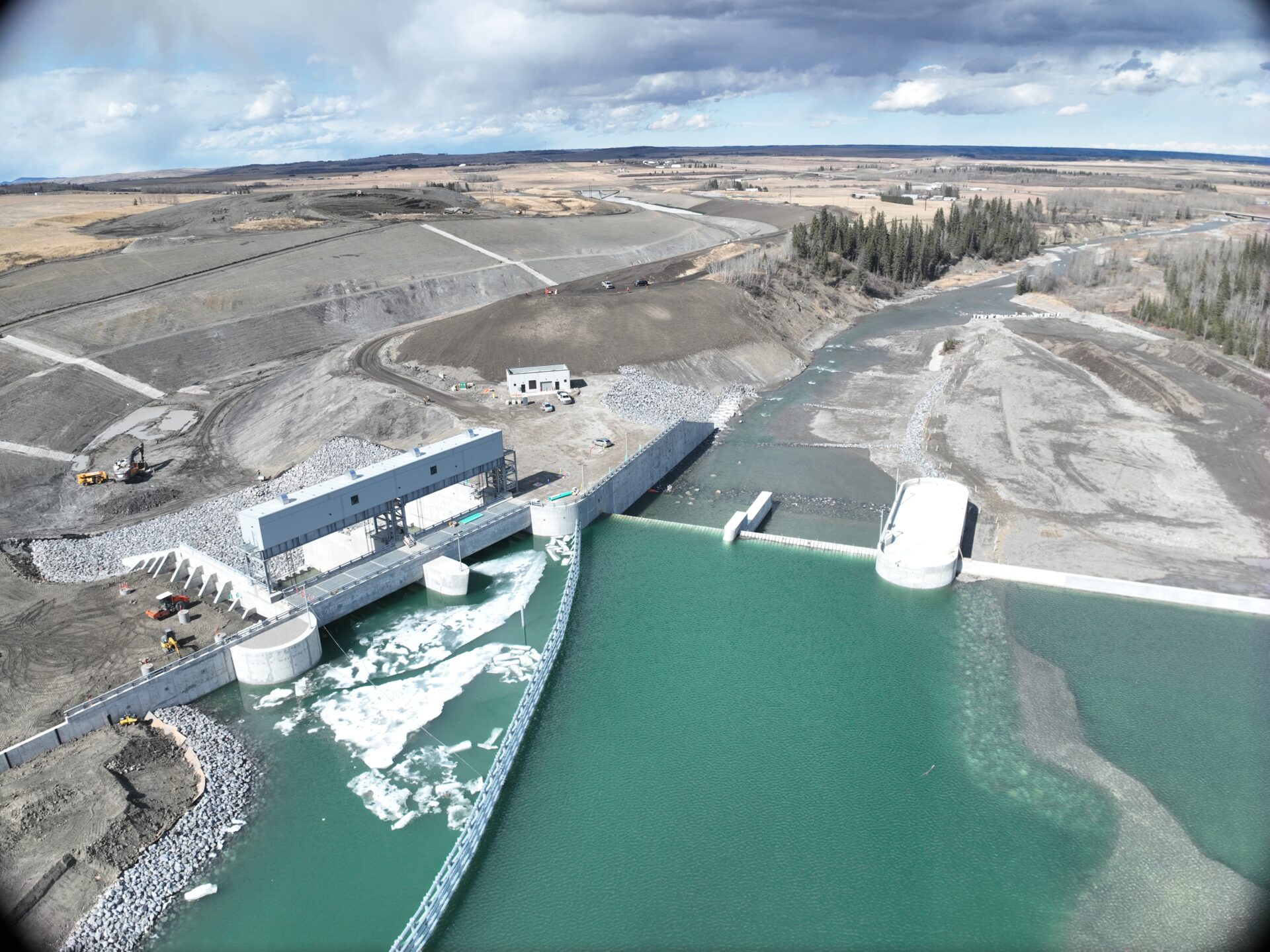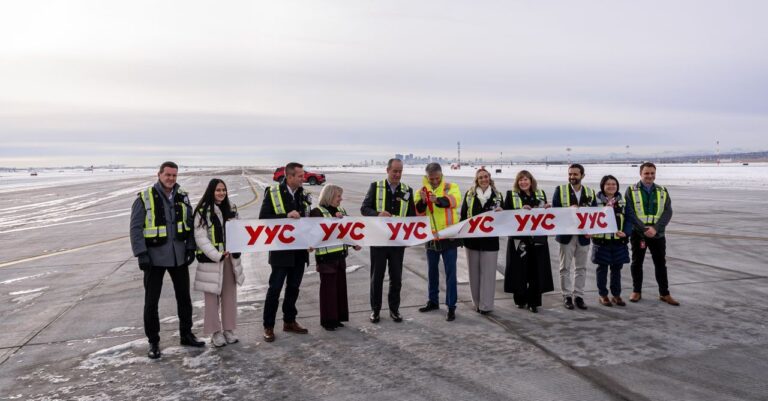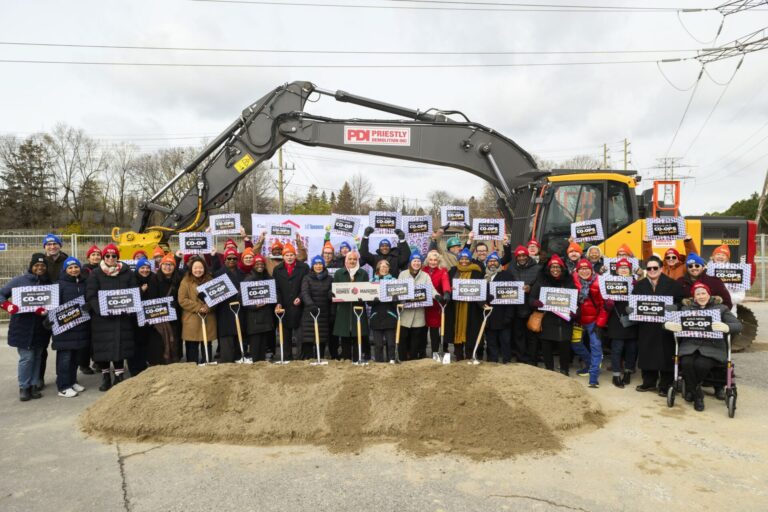The Government of Alberta announced that the Springbank Off-Stream Reservoir (SR1) is now in operation, protecting lives, and critical infrastructure in southern Alberta from floods.
In June 2013, southern Alberta experienced the costliest natural disaster in Canadian history, causing five deaths, displacing more than 80,000 Albertans and resulting in more than $5 billion in damages. In response, Alberta’s government committed to building SR1 to strengthen flood protection for Calgary and nearby communities.
Construction of the SR1 began in 2022, following robust engagements with the public and First Nations, and a comprehensive regulatory process. Following three years of construction, the SR1 is now complete and can provide communities along the Elbow River with a floodwall of defense against large-scale floods. As a dry reservoir, it will divert, store and then release flood waters back to the Elbow River when it’s safe to do so.
“With flood season now upon us, Calgary and southern Alberta can rest assured that they will be protected from future large-scale floods like that of 2013. SR1’s innovative design will ensure people, communities and businesses are buffered from the most devastating physical and economic impacts of major floods,” said Devin Dreeshen, Minister of Transportation and Economic Corridors.
“We are defending Albertans in Calgary and southern Alberta from the risks of floods. The Springbank Off-Stream Reservoir, which is now operational, will help reduce flood risks and protect lives, homes, businesses and the critical infrastructure we all rely on for many years to come,” said Rebecca Schulz, Minister of Environment and Protected Areas.
Components include 70.2 million m3 of reinforced concrete for storage capacity, which is about 28,000 Olympic-sized swimming pools. SR1 is the first of its kind in Alberta, using a coordinated approach to engage multiple aspects of flood mitigation infrastructure. SR1 will work in tandem with the Glenmore Reservoir and other flood mitigation infrastructure in and around Calgary to manage downstream water flows and reduce the impacts of floods by temporarily holding water and reducing flows in the Elbow River. As water volume increases and the Elbow River water level rises, SR1’s diversion channel will move water to the off-stream storage reservoir, protecting surrounding areas from flooding.
“The Springbank Reservoir reflects government’s commitment to protecting Albertans, wildlife and the diverse landscapes we all share. This flood mitigation measure will ensure critical habitats are protected, meaning fish and wildlife populations in the region can continue to thrive, while also protecting the outdoor spaces Albertans hold dear,” said Todd Loewen, Minister of Forestry and Parks.
SR1 was designed to minimize environmental impacts and by managing downstream river flow, SR1 not only reduces the overall flood risk, it also protects the river, critical habitat, fish and wildlife. Mitigation and monitoring plans were developed during the regulatory process for fish, air quality, surface and groundwater, wildlife and vegetation.
“Calgarians remember all too well the devastation of the 2013 floods. Today marks a turning point. The completion of SR1 means we are better prepared, more resilient and actively protecting people, property and prosperity. I’m proud to see this collaborative investment in long-term safety and sustainability for our region,” said Jyoti Gondek, mayor, City of Calgary.
Indigenous monitors were on site during construction, and any items identified as having historical or cultural importance were assessed by an archaeologist and reported to Alberta Culture, in accordance with the Historical Resources Act. Following engagement with First Nations, a land use plan was developed to guide land use when SR1 is not being used for flood mitigation.
SR1 is located in Rocky View County, about 15 kilometres west of Calgary on Treaty 7 land.
SR1 is a dry (off-stream) reservoir that will only hold water during a flood emergency, diverting flood water from the Elbow River before releasing it back into the river after the flood risk has passed.
Total cost: $849.4 million – total estimated cost, including land purchases
- $680.9 million – total provincial government cost
- $168.5 million – federal government contribution
SR1 components:
- 4.7-kilometre long, 24-metre -wide diversion channel
- 29-metre high, 3.8-kilometre long, off-stream earthen storage dam and reservoir
Includes:
- 5.2 million m3 of dam infill and 5.6 million m3 of excavated earth were used
Featured image: (Government of Alberta)













It was a pleasure for Doka to partner with Vinci during the construction of this project.
Doka Canada based here in Calgary provided formwork, both standard and custom fabrication, technical design and supplies to ensure accuracy in the many concrete structures required. Not only will this protect the City of Calgary it will contribute to our lifelong responsibility to ensure our environment a unique wildlife associated this area of Southern Alberta.
The project also has personal interest of me I joined Doka back in 2013 and along with many other residents living through the “great flood” of 2013 spent many evenings and weekends helping residents in the Mission area of Calgary and the downtown of neighboring town of High River clear out flooded basements and rescuing many personal irreplaceable belongings.
Like many families my family spent 3 nights in our camping trailer in a Walmart parking lot while we waited for the rescue team give us all clear to return to our homes.